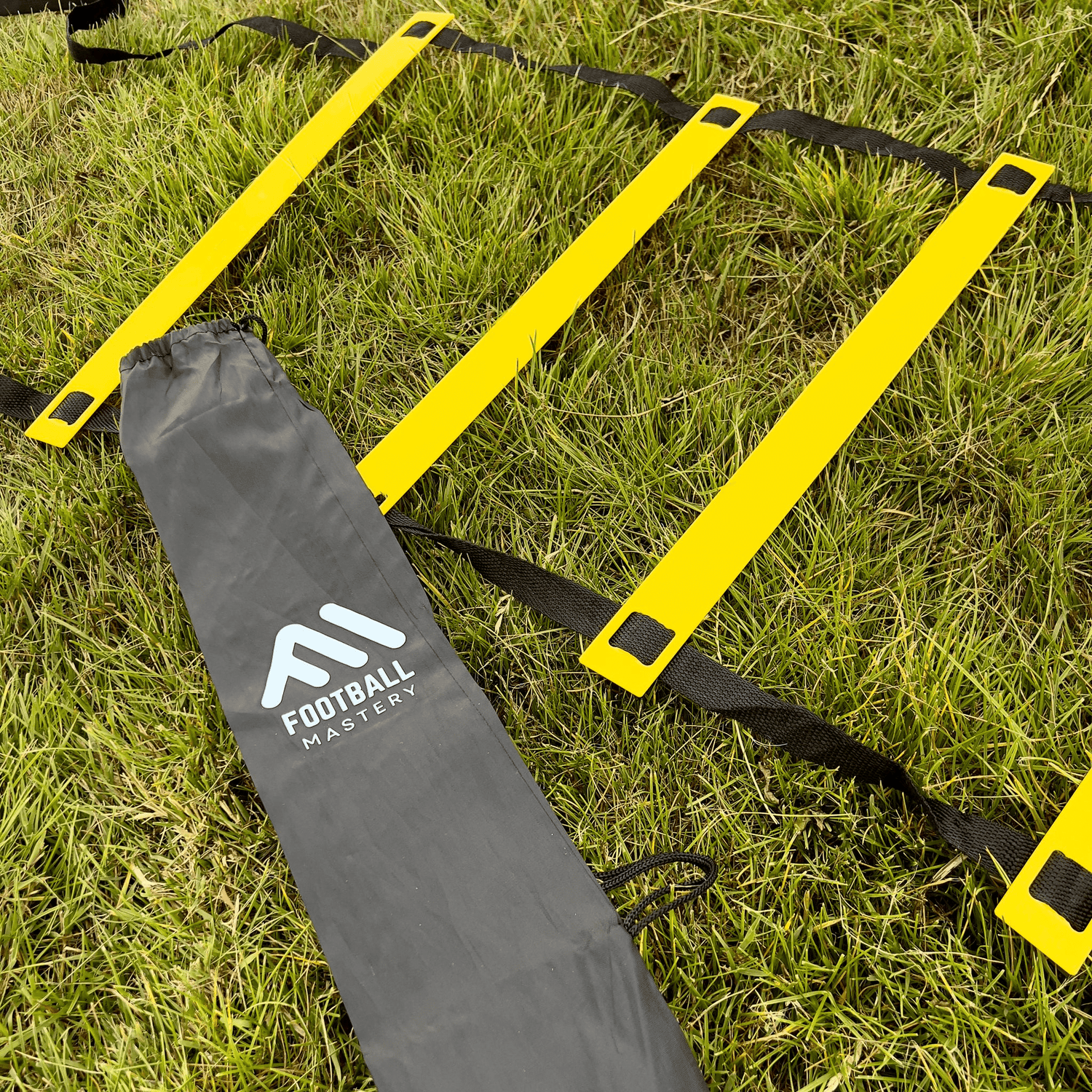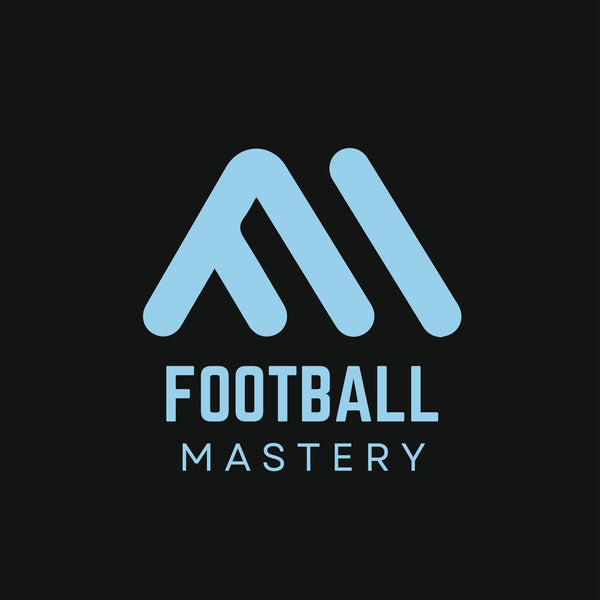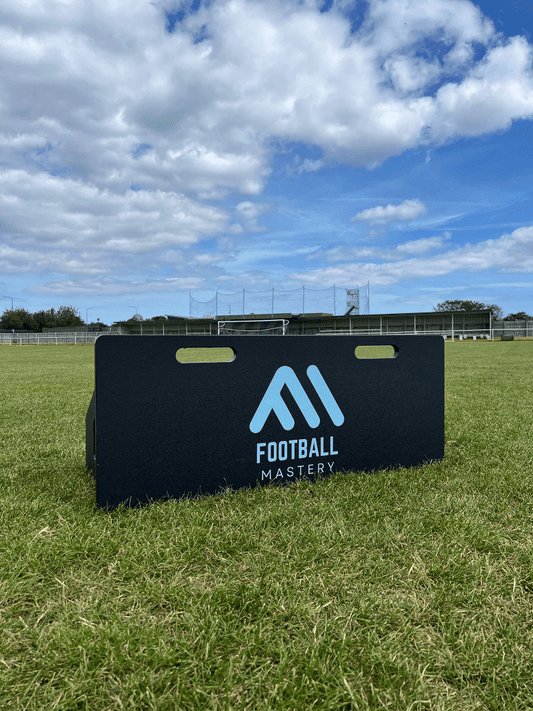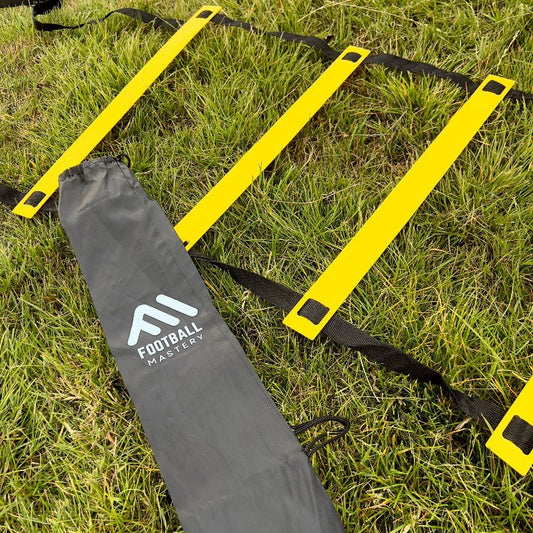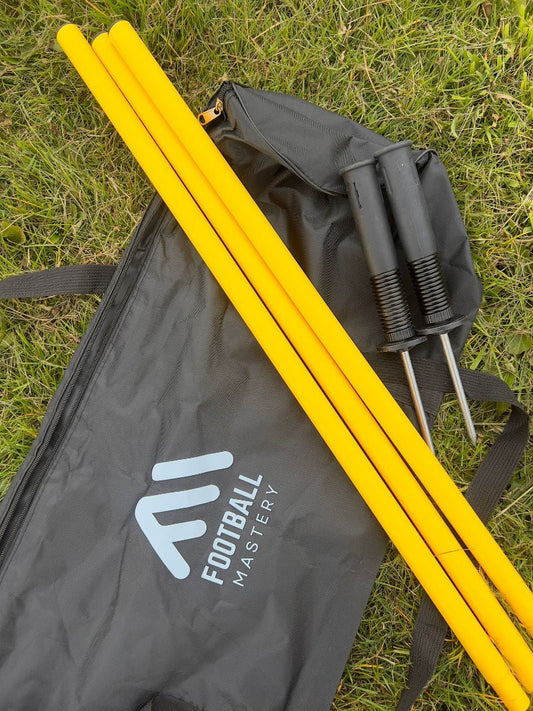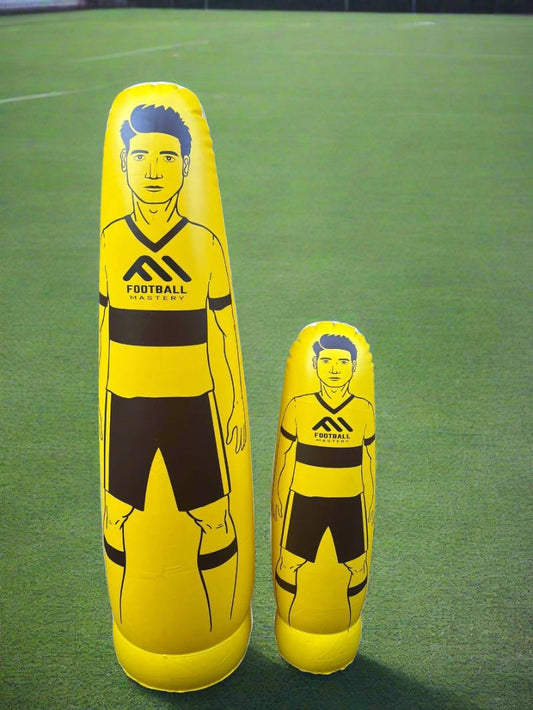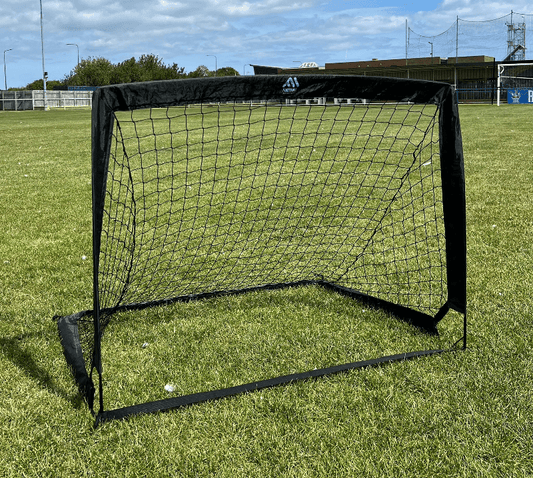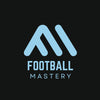
Improve Your Passing with Football Rebound Boards
Share
Precision. Speed. Control. This article is your go-to guide for mastering one of the most fundamental elements of football—passing—using one of the most underrated yet powerful tools in training: the rebound board.
We’ll break down how football rebounders transform your passing game by helping you work on accuracy, technique, first touch, and reaction speed. We’ll dive into solo and group training drills, explore different rebound board types, and discuss how they simulate real match scenarios. Whether you’re a grassroots player or on an academy path, you’ll discover how to build muscle memory and improve decision-making under pressure. Expect practical insights, actionable drill formats, and expert-backed development strategies—all tailored to raise your passing game.
This is not just another generic guide. It’s a deep-dive built for footballers who want to train smarter, not just harder.
Why Passing Deserves More Attention
Passing might look simple. But the gap between a casual pass and a precision-weighted ball in tight space is the difference between possession and turnover. And that’s exactly where rebound boards come in.
In modern football, the tempo of the game is faster, defenders are sharper, and space is scarce. Players must execute with speed, vision, and technical mastery. Without structured, repetitive, and position-specific training, you’re likely to plateau.
That’s where tools like the Football Mastery Rebound Board become essential. Not a gimmick—this is a serious training aid designed to sharpen your edge.
The Science of Repetition: Why Rebound Boards Work
At the heart of skill development is repetition. But not just any repetition—progressive, varied, feedback-driven repetition. Rebounders allow you to:
-
Repeat passing drills at high frequency without a partner.
-
Receive the ball at game-realistic angles and tempos.
-
Train consistently across seasons and surfaces.
-
Build muscle memory for different passing styles (e.g., short, long, one-touch, and angled).
Rebound boards also introduce variability into your sessions. Unlike a wall, a properly engineered adjustable rebounder returns the ball unpredictably, mimicking how it behaves in real matches. This enhances not just passing accuracy, but also cognitive agility, first-touch control, and decision speed.
Setting Up: Choosing the Right Rebound Board
Not all rebounders are made equal. For meaningful training impact, your equipment should reflect your goals. Football Mastery has engineered a range of boards for technical passing sessions, reaction work, and multi-skill progression.
Key factors when choosing:
-
Angle adjustability for different passing drills and ball trajectories.
-
Surface response, for consistent ball return without dead bounces.
-
Portability if you’re training across multiple locations.
The full collection of Football Mastery Rebound Boards includes standalone boards and bundle kits for targeted skill development. These are ideal for everything from youth academy setups to professional-level environments.
Core Training Themes: Building Your Passing Arsenal
1. Passing Accuracy & Precision Drills
To develop passing consistency, you need clear targets. With a rebound board, you can:
-
Aim at specific zones to simulate short and long-range passes.
-
Use tape or chalk to mark “zones” for accurate delivery.
-
Work with alternating feet to develop bilateral passing fluency.
Example Drill:
Precision Zone Hitting
Stand 8–10 yards from the board. Set 3 target zones. Pass to each zone in sequence—left, centre, right. Vary pass weight each round. Focus on minimal touch and reset quickly for the next strike.
2. First Touch & Receiving
Many players struggle with their first touch under pressure. A rebound board helps train:
-
Receiving ground passes with different foot surfaces (instep, sole, outside).
-
Dealing with unpredictable rebounds.
-
Creating space with tight directional first touches.
“If your first touch fails, you’re already chasing the game.”
Suggested Variation:
Rebound the ball, then trap it using thigh control or a soft touch with the laces. Combine with a turning motion to simulate receiving under pressure.
3. One-Touch Passing & Movement Patterns
One-touch passing isn’t just a flair skill—it’s essential in high-tempo football. Rebound boards make this training dynamic by encouraging fast return passes and fluid footwork.
-
Start with static one-touch return drills.
-
Advance to moving one-touch drills using cones for lateral movement.
-
Add a finishing move like a shot or pass switch to a target area.
These kinds of drills develop decision-making, foot placement, and reaction time—skills that are difficult to master in team-only sessions.
You can scale up by combining rebound work with other gear, like what’s available in our Football Mastery Bundles.
Training for the Real Game: Simulating Match Scenarios
While technical drills build the foundation, the goal is to transfer skills into match situations. Rebound boards help players experience pressure moments, even in solo sessions.
Dynamic Movement Drills
In a real match, you're rarely static. You’re closing down, checking your shoulder, and finding passing angles while the clock ticks. The rebounder replicates this:
-
Start with a pass to the board, then move quickly to a different zone to receive the rebound.
-
Add in a dummy cone defender to simulate pressure.
-
Continue the drill with a quick turn, followed by a through-ball or cross simulation.
This drill challenges your agility, footwork, and anticipation—perfect for offensive movement training.
“The best players don’t just play the ball; they read what comes next.”
Quick Reaction and Reflex Work
Unpredictable rebounds aren’t just chaos—they’re a powerful training tool.
-
Stand at different angles relative to the rebound board.
-
Use varied surfaces (instep, laces, outside foot) to pass.
-
React fast to the ball’s return trajectory and adapt touch accordingly.
You’re training your perception-response loop, which is crucial for high-level play.
If you're a coach or developing a team session, reaction drills can be gamified for competitive edge. Use time trials, scoring zones, or accuracy targets to keep players engaged and driven.
Rebound Training for Goalkeepers
Goalkeepers need as much technical refinement as outfield players—and often don’t get it. Rebound boards are a brilliant tool for:
-
Quick reaction saves from unpredictable rebounds.
-
Handling drills for close-range scenarios.
-
Footwork under pressure (e.g., saving and distributing in one flow).
A board like the Football Mastery Pro Rebounder allows keepers to work on low-dives, snap saves, and distribution techniques without needing a partner.
Incorporate with cones or markers for drill intensity and progressive overload. Even basic setups can simulate high-pressure moments from set pieces or one-on-one situations.
Explore Football Mastery’s full training tools collection for rebounder-compatible goalkeeper setups.
Drill Blueprint: Advanced Passing Combinations
Let’s look at a few layered drills that bring together passing, control, movement, and game simulation. These go beyond simple ball strikes and help build positional awareness and tactical readiness.
Drill 1: The 3-Zone Passing Arc
Set up three rebound boards (or one portable board moved quickly):
-
Zone 1: Short pass and receive.
-
Zone 2: Lateral pass with angled return.
-
Zone 3: Switch play with a longer-range pass.
This simulates switching tempo and changing direction, key in building attacks. Incorporate alternating feet and chest trap returns for added difficulty.
Drill 2: Pressure Box Touch Drill
-
Create a 4x4m grid with cones.
-
Pass to the rebounder and trap the return within the box.
-
After 3 touches, move to another cone and repeat.
Focus: first-touch control, tight space play, and fast transitions.
Want to see this training style integrated into a full development plan? Check out our curated Rebound Board Collection built specifically for progressive players and coaches.
Adaptability for All Player Levels
One of the best things about rebound boards is their scalability. They’re as useful in a Sunday league warm-up as they are in a Premier League academy.
Youth development players can build strong foundations.
Academy players can fine-tune technique.
Senior athletes can keep sharp through micro-drills and skill repetition.
Rebounders are also excellent for injury recovery, offering low-impact but high-engagement drills focused on technical refinement.
Training doesn’t stop when the whistle blows. Rebound boards make sure of that.
Solo vs Group: Structuring Sessions for Maximum Impact
Whether you’re training alone or in a group, the rebound board adapts. But to get the most out of it, you need to design sessions that are both purposeful and progressive.
Solo Training
Solo rebound work isn’t just better than nothing—it can be more effective than team sessions for certain skills.
Benefits:
-
Complete focus on technical execution
-
Repetition without disruption
-
Ideal for isolating weaknesses
Structure Tips:
-
Keep drills short and intense: 3-5 sets of 45 seconds with 15–20 seconds rest.
-
Alternate between touch-focused and movement-based drills.
-
Film your sessions for video feedback—it’s one of the fastest ways to identify poor habits.
Check out our Football Mastery Training Bundles which are built to support this kind of structured solo development.
Group Training
In team or group environments, rebound boards can become even more powerful.
Use them to create station-based training circuits, combining:
-
One-touch relay passing
-
Movement and communication drills
-
Timed challenge zones for friendly competition
For defenders and midfielders, introduce defensive interception drills using angled rebound passes. For attackers, simulate fast turn-and-finish sequences by positioning the rebounder near the penalty box.
Key coaching tip: assign roles and rotate to ensure each player works on different aspects of passing and receiving under pressure.
Planning for Long-Term Skill Development
Too many players use rebounders only during warm-ups or as filler drills. To see real gains, it must become part of a deliberate skill progression plan.
Weekly Progression Plan Example
| Day | Focus | Key Outcomes |
|---|---|---|
| Monday | First Touch + Short Passing | Trapping the ball, one-touch returns |
| Wednesday | Precision + Long Passing | Target-based delivery, weight control |
| Friday | Dynamic Movement + Quick Decision-Making | Lateral movement, unpredictable returns |
| Weekend | Match Simulation Drills | High-intensity, varied direction + pace |
Each week, increase the drill intensity or challenge parameters (e.g., smaller zones, weaker foot, limited touches). This mirrors the principle of progressive overload—commonly used in physical training, but just as critical for skill development.
Pair this plan with a Football Mastery Rebound Board and a few cones, and you’ve got a professional-grade micro training setup.
Smart Training: Tracking, Feedback & Modern Tools
In elite football circles, metrics matter. Even if you’re not tracking with GPS or smart apps, you can use manual progress tracking to stay accountable.
Ideas for Smart Self-Coaching:
-
Use cones or chalk to mark target zones on the rebound board
-
Count number of accurate deliveries per set
-
Track your reaction time or pass-return time with a stopwatch
-
Film sessions and annotate mistakes (late movement, poor contact, etc.)
-
Create a challenge log: e.g., “30 one-touch passes in 1 minute with non-dominant foot”
Want to future-proof your training? Consider integrating AI-based tools or GPS tracking drills in combination with rebounders. While not yet mainstream at grassroots level, the tech is rapidly becoming more accessible—and the competitive advantage is undeniable.
Choosing the Right Rebound Board: Final Advice
It’s not just about buying a tool—it’s about investing in your development. Your rebound board should match your training context, technical level, and ambition.
Ask Yourself:
-
Do you need a portable, solo-use board for daily sessions?
-
Will you be sharing it in team environments?
-
Do you need angle adjustability for varied rebound trajectories?
-
What’s your main focus: short passing, long range, or multi-skill drills?
Explore our full line of Rebound Boards to find the model that best suits your journey—whether you're honing your first touch or refining pro-level one-touch combinations.
Final Word
Football rebound boards aren’t magic. But in the right hands—and with the right structure—they’re a transformational tool.
Used well, they:
-
Sharpen passing accuracy and consistency
-
Build real-time decision-making under pressure
-
Improve first touch, footwork, and reaction time
-
Enable focused training across all positions and playing styles
If you’re serious about developing your game—whether you’re a coach, a parent supporting a young player, or an athlete with professional ambitions—this one piece of kit can elevate your entire approach to training.
So the next time you're looking to improve your passing, don't just head to the park for a few aimless kicks. Set up your rebounder, build your session with intent, and train like the players you admire.
Because mastery doesn’t happen by accident. It happens by design.
Frequently Asked Questions (FAQ)
1. Can rebound boards be used on any surface (grass, turf, concrete)?
Yes, quality rebound boards—like those in the Football Mastery collection—are designed for multi-surface use. They work well on natural grass, artificial turf, and even concrete, though using them on uneven ground may slightly affect the ball’s return trajectory.
2. What age group are rebound boards suitable for?
Rebound boards are suitable for all age groups, from U6 grassroots players up to adult semi-pros and professionals. Younger players may benefit from simplified drills with slower ball speeds, while older players can increase drill intensity and complexity.
3. How long should I train with a rebound board each session?
For effective results, 15–30 minutes of focused rebound training 3–4 times a week is ideal. It’s better to train frequently and intentionally in short bursts than to overdo it in one long session.
4. Can rebound boards help with shooting as well as passing?
Yes, particularly with volleys, rebound finishes, and reaction-based shooting. For example, angle the board to create unpredictable bounces and practice shooting first-time from returns. Some players also use rebounders for striking technique refinement.
5. Are rebound boards useful for small teams or coaches with limited space?
Absolutely. Rebound boards are space-efficient, making them perfect for small-sided coaching, school setups, or urban environments where pitch space is limited. A single board can serve multiple players through rotation-based drills.
6. How do rebound boards compare to training against a wall?
Walls are static, unpredictable, and often unsafe for ball rebound training. A well-designed rebound board offers angle control, portability, and repeatable accuracy, simulating match-realistic passing scenarios—something a wall can’t deliver consistently.
7. Can I integrate rebound board drills into full-team training sessions?
Yes. Many coaches use rebounders in technical warm-ups, circuit-based training, and small-group position-specific sessions. They’re especially useful for keeping players engaged during downtime or transition moments in team practices.
8. Is a rebound board better for short passing or long passing drills?
Both. For short passing and one-touch accuracy, a compact, low-profile board is ideal. For long passing, larger boards or those with more rebound energy are better. Some players invest in multiple boards or adjustable models for versatility.
9. How durable are the boards in wet or cold weather?
Our Football Mastery rebound boards are built from weather-resistant materials suitable for year-round outdoor use. While they hold up well in rain and cold, we recommend storing them indoors or under cover when not in use to prolong lifespan.
10. What drills can I do with a rebound board if I’m recovering from injury?
Rebound boards are perfect for low-impact, technical rehab sessions. Players recovering from lower-body injuries can focus on stationary passing, touch-and-control drills, or upper-body coordination work (such as hand-eye drills for goalkeepers). Always consult with a physio or rehab coach before starting.
